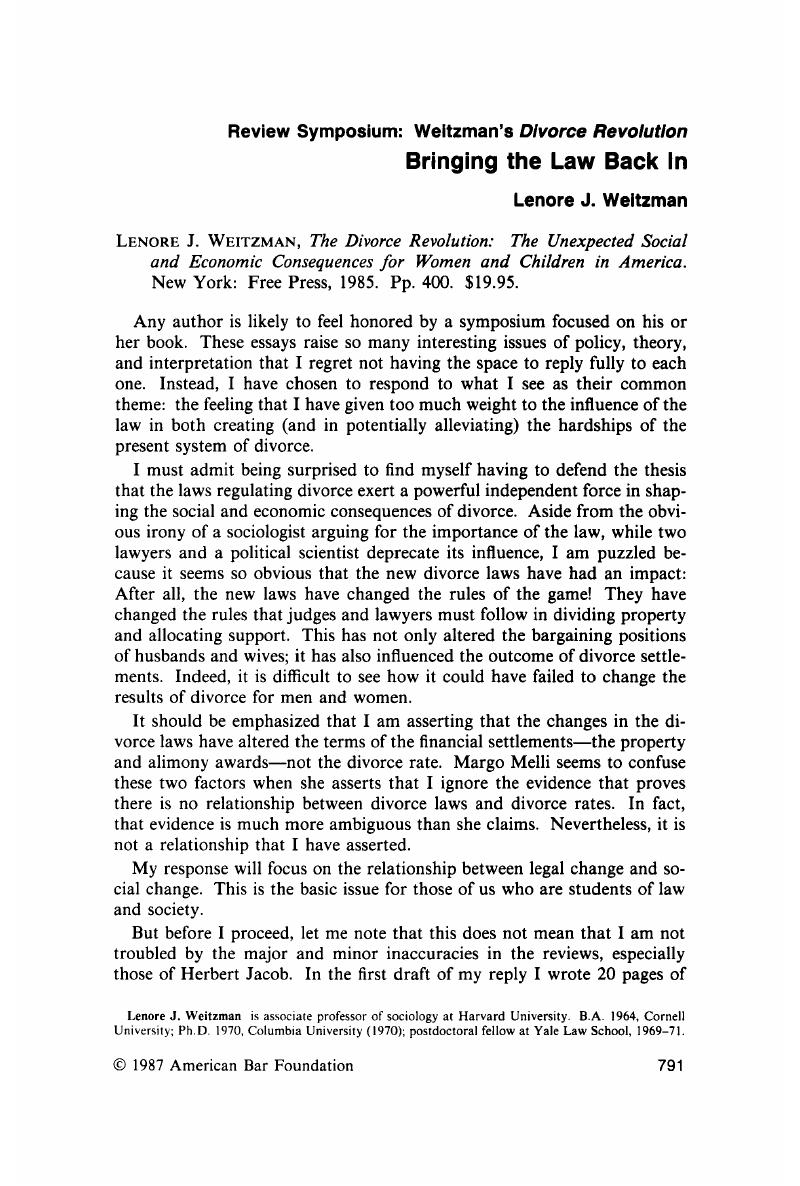No CrossRef data available.
Published online by Cambridge University Press: 20 November 2018

1 Ruth B. Dixon and Lenore J. Weitzman, When Husbands File for Divorce, 44 J. Marriage & Family 103 (1982).CrossRefGoogle Scholar
2 H. Elizabeth Peters, No-Fault Divorce and Bargaining Divorce Settlement, (paper presented to American Bar Association National Symposium on Alimony and Child Support, Apr. 24, 1987, Austin, Tex). See also id., Marriage and Divorce: Informational Constraints and Private Contracting, 76 Am. Econ. Rev. 437 (1986).Google Scholar
3 When the courts deny divorced women the support and property they need to maintain their families, they are relying, they say, on the woman's ability to get a job and support herself. But with women's current disadvantages in the labor market, getting a job cannot be the only answer-because it does not guarantee a woman a way out of poverty. Even with full-time employment, one-third of the women cannot earn enough to enable them and their children to live above the poverty level. The structure of the job market is such that only half of all full-time female workers are able to support two children without supplemental income from either the children's fathers or the government.Google Scholar
4 Final Report of the California State Senate Task Force on Family Equity, June 1, 1987.Google Scholar